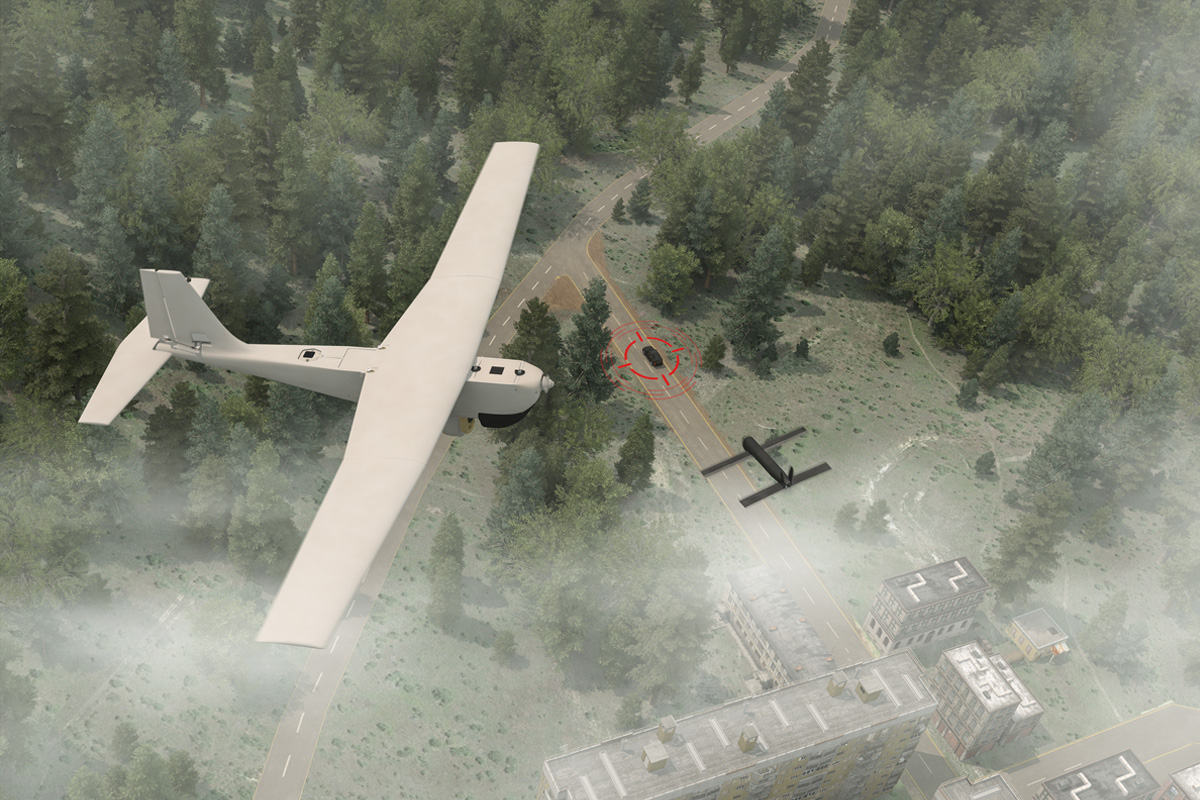AeroVironment's Puma Small UAS Achieves Record Flight of Nearly Five Hours Using Fuel Cell Battery Hybrid System
MONROVIA, Calif.--(BUSINESS WIRE)--June 27, 2007--AeroVironment (AV) (NASDAQ:AVAV), a leader in unmanned aircraft systems and efficient electric energy systems, today announced that it successfully flew its Puma small unmanned aircraft for nearly five hours while it was powered by an onboard fuel cell battery hybrid energy storage system. This successful demonstration marked the completion of the first task under AV's contract with the U.S. Air Force Research Laboratory (AFRL) for the development of advanced propulsion technologies for unmanned aircraft.
The $4.7 million, five-year IDIQ contract calls for several development tasks designed to improve the efficiency and flight duration of small unmanned aircraft systems (UAS). Other tasks under the contract include improvement of electric motor efficiency, integration of solar cells into aircraft wings, and the exploration of hydrogen storage technologies. For this flight demonstration, AV worked with Protonex Technology Corporation (LSE:PTX) to develop the fuel cell battery hybrid energy storage system, which included hydrogen generation technology licensed from Millennium Cell Inc. (NASDAQ:MCEL).
Puma's standard propulsion system comes equipped with rechargeable batteries with a listed flight time of 2.5 hours. The nearly five-hour duration of the Puma flight using fuel cell battery hybrid power surpassed the longest previous Puma flight achieved by AV using any technology. Looking forward, AV and Protonex expect Puma flight durations to increase further through optimization and continued development of the hybrid system.
"We are delighted with the performance of AV's fuel cell hybrid-powered Puma," said First Lieutenant Don Erickson of the Air Force Research Laboratory. "This system has the potential to provide extended duration capabilities for a variety of missions supporting operational units around the world."
"Our customers, including the U.S. Army, Marine Corps, Air Force and Special Operations Command, rely upon our small UAS for real-time reconnaissance, surveillance and target acquisition," said Tim Conver, president and chief executive officer of AV. "This demonstration of long-duration flight from a hand-launched UAS using fuel cell battery hybrid technology represents a good example of AV's expertise in efficient electric energy technologies. This is an important capability expansion that could extend the usefulness and concept of operations of our entire portfolio of unmanned aircraft."
Each of AV's small UAS can be transported and set up with minimal logistical footprint, and launched and operated by one person. Each is powered by a replaceable and rechargeable battery pack. Using standard propulsion systems, Wasp, Raven and Puma can fly for up to 30, 90 and 150 minutes, respectively, while wirelessly transmitting live video and other information generated by electro-optical or infrared sensor payloads, enabling their operators to view and capture images on a hand-held ground control unit. Their high degree of portability and flexibility in real world applications enable these systems to provide tactical units with critical information when and where they need it, facilitating faster, safer movement through urban and rural environments. Consistently high levels of operational availability in areas of operation insure that AV's small UAS are ready and able to perform their missions reliably when required. To date, AV has produced more than 6,000 small unmanned aircraft.
About Puma
With a wingspan of 8.5 feet and weight of 12.5 pounds, Puma is a lightweight, hand-launched UAS that provides aerial observation at line-of-sight ranges up to 10 kilometers. Operating from the same ground control system used for Raven and Wasp, Puma incorporates avionics that enable autonomous flight and precise GPS navigation.
Puma delivers advanced flexibility and endurance, with an adaptable design that allows for custom payloads to be added in lieu of the air vehicle's standard configuration of color and IR cameras. Puma is easy to deploy, easy to use, and allows the operator to view both stationary and moving targets easily, providing real-time intelligence with persistent low-altitude reconnaissance.
About AeroVironment, Inc. (AV)
Building on a history of technological innovation, AV designs, develops, produces, and supports an advanced portfolio of Unmanned Aircraft Systems (UAS) and efficient electric energy systems. The company's small UAS are used extensively by agencies of the U.S. Department of Defense and increasingly by allied military forces to deliver real-time reconnaissance, surveillance, and target acquisition to tactical operating units. AV's PosiCharge® fast charge systems eliminate battery changing for electric industrial vehicles in factories, airports, and distribution centers. For more information about AV, please visit www.avinc.com.
Safe Harbor Statement
Certain statements in this press release may constitute "forward-looking statements" as that term is defined in the Private Securities Litigation Reform Act of 1995. These statements are made on the basis of current expectations, forecasts and assumptions that involve risks and uncertainties, including, but not limited to, economic, competitive, governmental and technological factors outside of our control, that may cause our business, strategy or actual results to differ materially from those expressed or implied. Factors that could cause actual results to differ materially from the forward-looking statements include, but are not limited to, the activities of competitors; failure of the markets in which we operate to grow; failure to expand into new markets; failure to develop new products or integrate new technology with current products; changes in the regulatory environment; and general economic and business conditions in the United States and elsewhere in the world. For a further list and description of such risks and uncertainties, see the reports we file with the Securities and Exchange Commission. We do not intend, and undertake no obligation, to update any forward-looking statements, whether as a result of new information, future events or otherwise.
CONTACT: AeroVironment, Inc.
Steven Gitlin, +1-626-357-9983
info@avinc.com
or
For AeroVironment, Inc.
Mark Boyer, +1-310-455-7812
mark@boyersyn.com
SOURCE: AeroVironment
